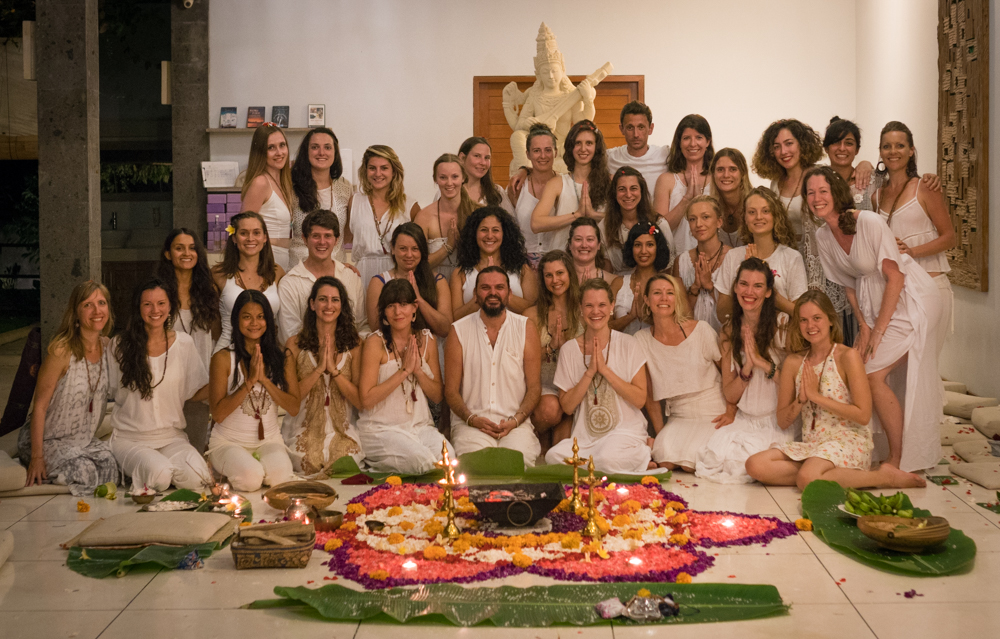
Guys, I did it. I’m a “yoga teacher,” it’s official [reason for quotes coming soon]. I participated in a 200 hour Yoga Teacher Training (YTT) at Blooming Lotus Yoga in Ubud, Bali, and it was quite the experience.
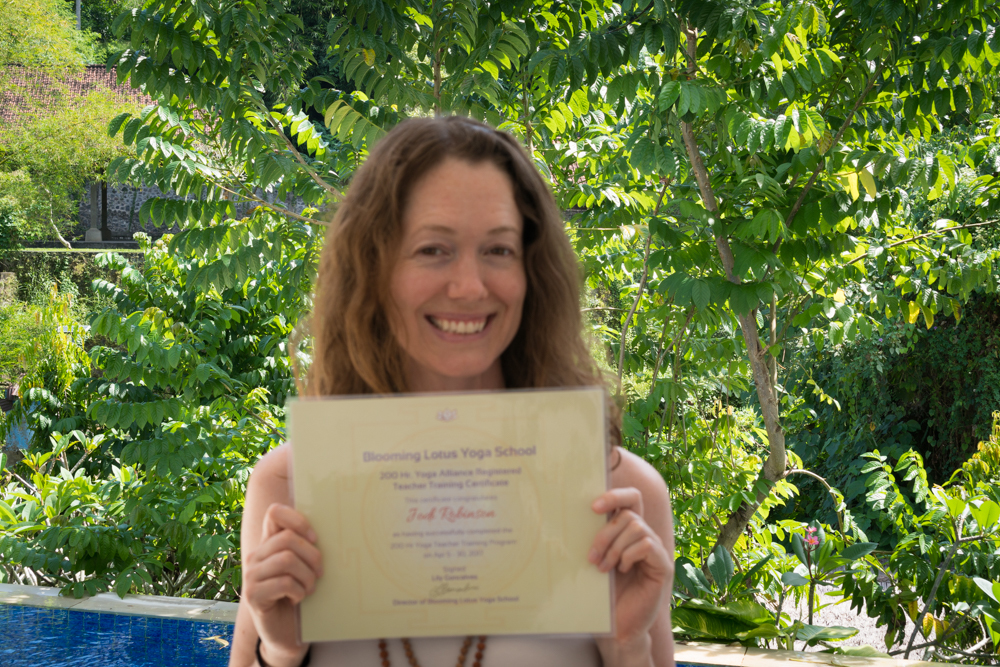
I have always thought yoga is simply about building strength, understanding your body and your limits, and trying to be present while going through the poses. It’s a physical challenge, right? It strengthens your muscles and joints and builds alignment. Sh*t, I even grew an inch since I started practicing 10 years ago. I mean, it is physically very good for you.
However, something always alluded me about yoga. I knew that we were supposed to be present and mindful during the class, but I never truly understood the whole breath awareness thing, pranayama (controlled breathwork), moving with your breath, and the mind/body connection.
THIS was why I wanted to do a YTT…to dive headfirst into it and really study the practice of yoga. Of course, I love the asana. I love building strength, coming out of a class feeling relaxed and more present, getting a good workout. But really, what the he*l is yoga? There was always a missing piece of the puzzle for me, and because I’m infinitely exploring (cue music), I chose to dive headfirst into a YTT.
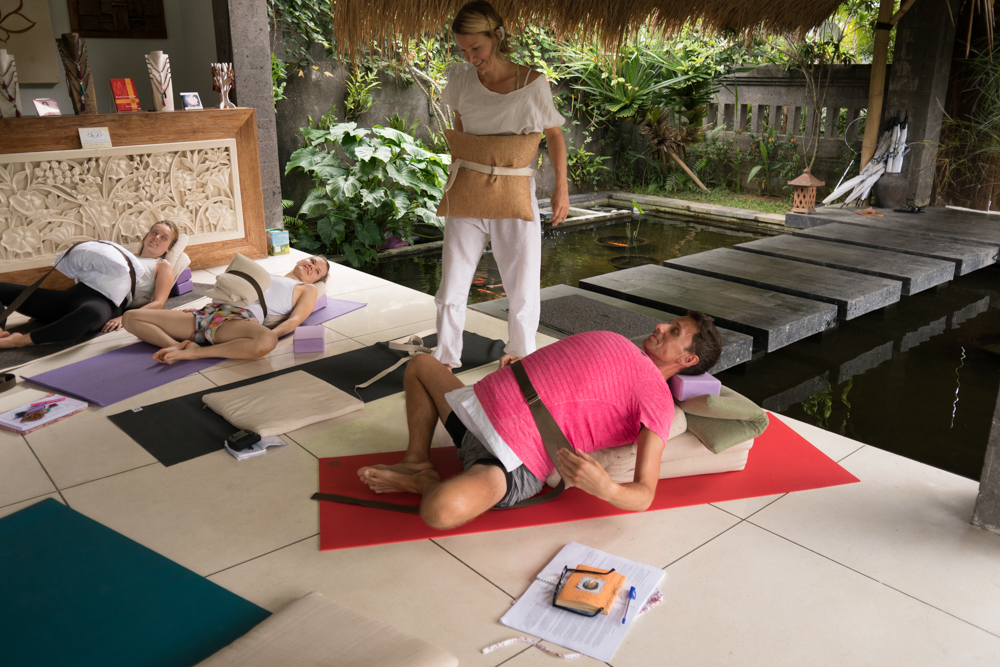
I did not do this because I wanted to teach, although that’s a nice skill to have. I did it because I truly didn’t get yoga. 10 years in, and I still didn’t get it. Thus I found myself enrolling in a school I knew very little about, but had great reviews. And I’m not talking about “this was a great yoga school” reviews. All of the reviews coming out of this puppy say things such as “life changing,” “will forever change your perspective on life,” and “best experience of my life.” How could I not jump on this opportunity?
Normally someone will choose a YTT because they want to teach a specific type of yoga. I, for example, am an Anusara Yoga buff. I know that Anusara isn’t really claimed anymore due to a scandal with the creator, but I don’t care because it’s still my favorite. Yes, I love westernized Anusara Yoga! Can we bring it back?
I looked very briefly for an Anusara YTT somewhere in the world, but didn’t come up with many options. Instead, I chose to enroll in a school that didn’t claim ANY type of yoga. In fact, I knew very little about Blooming Lotus when I applied. I literally went off the reviews and the fact that it was in Bali.
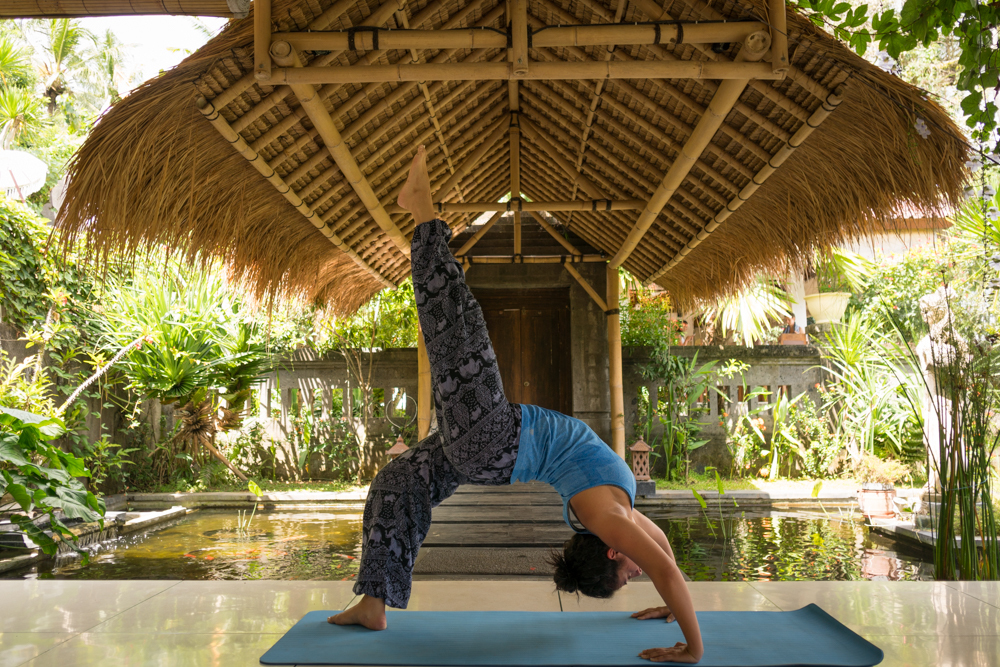
Granted, I have been to Bali before and honestly didn’t love it. But I needed something, anything, to get me to commit to leaving Washington, DC to travel. Getting accepted to this YTT was it. I applied without much thought; it simply felt right. When accepted, I didn’t mull it over (unusual for me). The fact that I got in was all I needed to make my decision.
I was going back to Bali, I was going to learn more about yoga, and I was finally making this whole travel thing a reality. All the pieces just seemed to fit into place.
Valid question, so let me generally start by saying we learned about classic, traditional yoga. I’m talking about the Four Paths of Yoga: Karma, Bhakti, Raja, and Jnana Yoga. No idea what the hell I’m talking about? Yeah, I had never heard of them either. But what we learned was traditional, spiritual, Hindu-based eastern yoga originating in India. We learned about a way of life, of which a very small fraction includes asana (yoga poses). Who knew?
Not I. But now I feel well equipped with a basic understanding. Real yoga is a way of life, a way of being in the world. It’s about love and unity with all beings. Love of self, love of life, love of all. It’s about experiencing the truth and bliss, without thoughts and concepts; of “no mind.” And about using different techniques to get there.
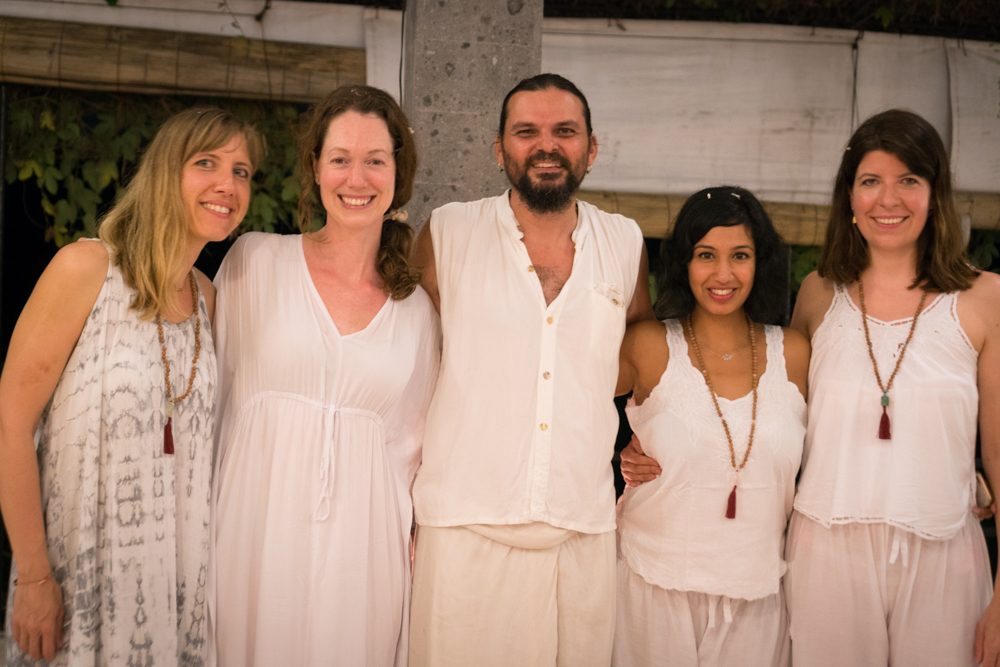
Real yoga is not the westernized version of asana we are all accustomed to. Real yoga is not hot yoga, Bikram, power yoga, Ashtanga, Iyengar, Aerial…the list goes on. Those are made up western derivatives of real yoga. A real yogi would not obtain a 200 hour yoga teacher training certificate and claim to teach yoga. Westernized yoga, yes. But a real yoga teacher learns from “enlightened” beings and there is no designation when one is qualified to teach yoga. A certificate does not exist in real yoga. It is simply a way of life.
To really be a yogi or yogini (shoutout to my ex who pointed out that “ni” should be added for women), one must believe that positive energy, or prana in the body and mind will lead to truth and bliss. Yogis believe that there are many things we can do to acquire and maintain positive energy while eliminating and avoiding negative energy.
That includes maintaining a yogic or ayurvedic lifestyle. For example, food. Yogis are essentially vegan, but they allow the use of vegetarian animal products only if the animal was non-harmed, healthy, peaceful, and happy prior to using those products. Chickens, for example, have some crazy energy that we don’t want to ingest into our body, for fear we will then acquire that same energy. Same with all other animals besides cows, apparently. So during our month-long visit on campus, we had yogurt originating from “happy” cows only.

The details of food consumption are pretty specific. Another example - any type of melon is okay to eat, but it is not a good idea to mix it with any other foods, it can only be eaten alone. I can’t tell you why this is though, so don’t ask. Just another random rule they seem to have thrown out there into the cosmos, obviously with some energy rationale.
Onions and garlic? Not for real yogis. There’s a bit too much spice there that will throw our energy into a tailspin.
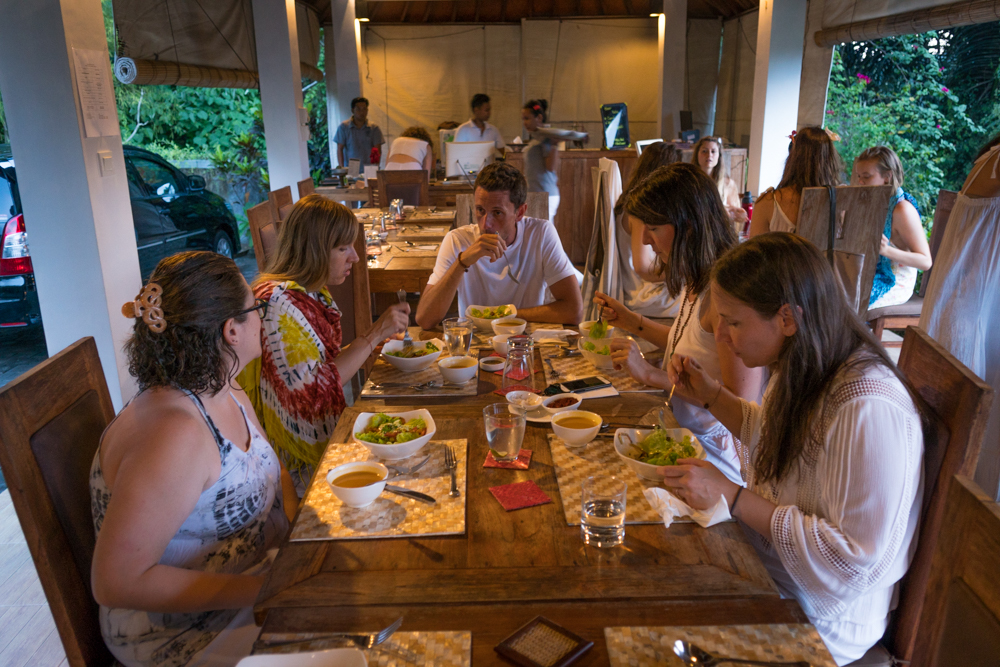
Another energy example for you; the ideal position to face while meditating is Northeast. Again, I couldn’t tell you why this is, other than the energy with the highest level of prana is emanated from that region. If that’s not available to you though, you can face the direction of a temple or other holy shrine. It is best to meditate before sunset, or better yet - at 4am. Yeah, I don’t see myself trying that out anytime soon.
Here’s another: when conducting yogic practices (meditation, pranayama, asana), one should wear white or light colors as it represents purity and contains the most positive energy.
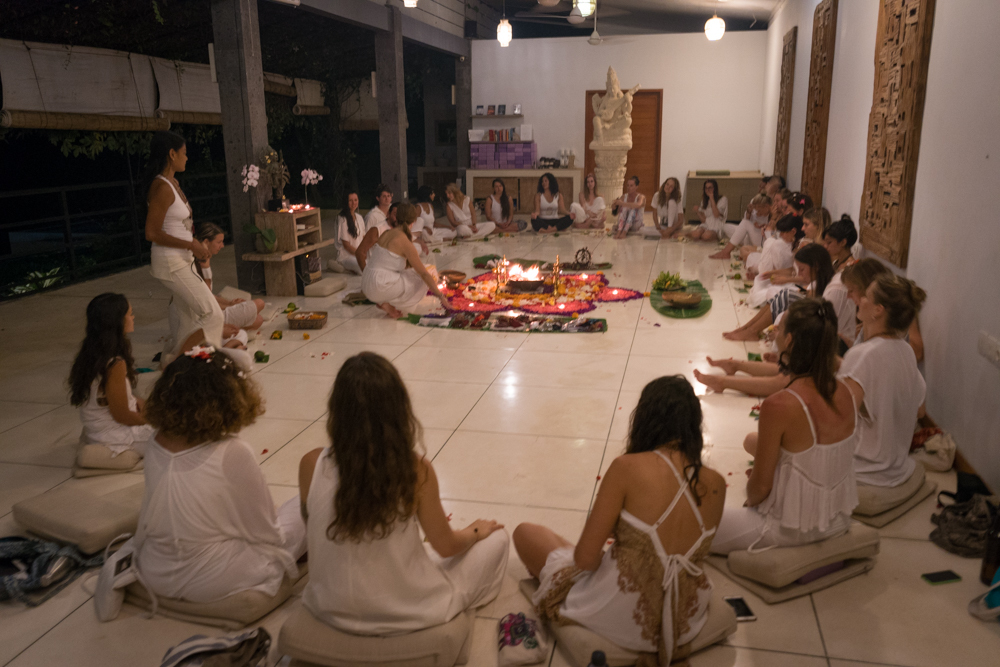
God forbid you leave the bathroom door open, or there is no bathroom door at all. Since the bathroom is used to dispel negative toxins, we don’t want that mixing with the other energy in our homes. Granted, I have unwillingly taken on some of this thinking. I mean, it sort of makes sense, right? I have found that my bathroom door has been shut at all times since learning that little tidbit of information.
Asana, loosely defined as yoga postures, is used to manipulate energy through the body. We want an aligned spine to get the best movement of energy. Twists allow energy to move in different directions. Inversions are good to move the energy toward the head, since it might be lodged down at your pelvis from sitting at a computer all day. They say that sun salutations are a complete practice, as they include inversions, backbends, forward bends, and twists. A complete way to move energy through the body.
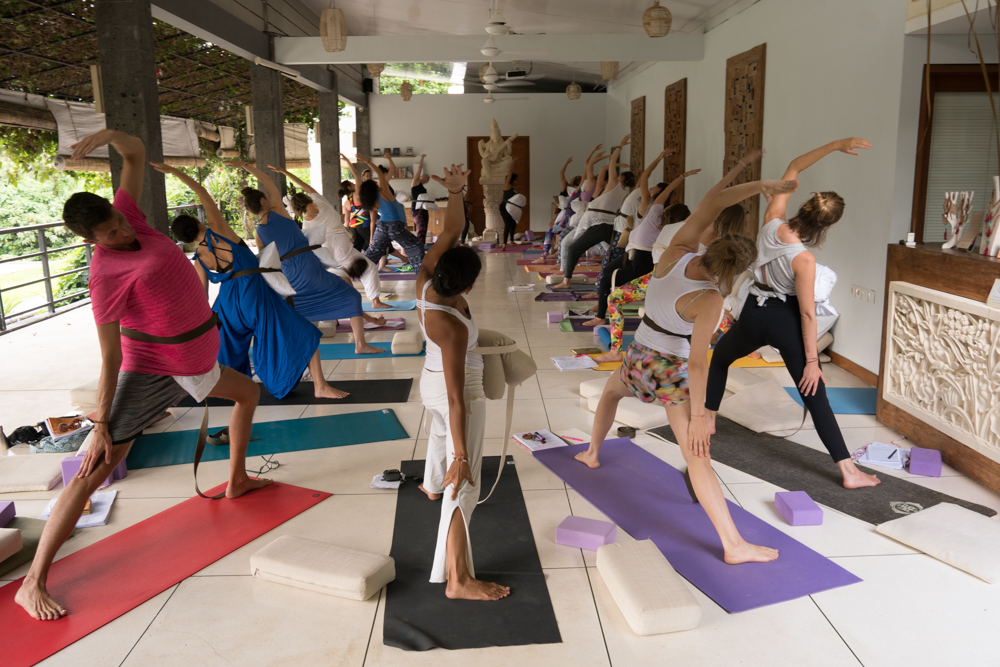
The other goal of asana is to become limber enough to allow one to sit in a meditation posture for extended periods of time (three hours per day is the goal, apparently. phhhh). It is not to build physical strength, contrary to popular belief. We simply want to move so that we are able to sit in a meditation seat. Funny, isn’t it?
We won’t even get into the chakras (energy centers) within the body and the other minute details we learned; mainly because I’m having a hard time believing some of it.
I also really struggled with using their meditation practices during meditation. Instead, I found myself using what I already know from mindfulness and insight meditation, which they said was fine to do.
Why did I struggle with their type of meditation? There were a few reasons. First, I struggled with the thought that the point of meditation is to move energy to achieve the “bliss” or “no mind” state. Rather, I practice awareness meditation, just letting what is be; watching it without attaching to it and with no judgment. There is no breath manipulation or trying to get to a certain place.

I also felt as though the emotional aspect was missing for me. While yogic meditation practices and mindfulness meditation are similar, it seemed more as though we were trying to control our emotions rather than letting them be as they are. I specifically love a type of mindful meditation that allows you to focus on a particular emotion while not attaching to it. It has gotten me through some tough times.
At Blooming Lotus, it almost seemed as though we should not have these emotions at all, since the goal of meditation was to have no thoughts. To me, that’s not reality. We have thoughts and emotions, we have to let them be while realizing their impermanence and not attaching to the story. That will in turn lead us to freedom from our thoughts and emotions, which are simply the story we’ve created for ourselves and our perception of reality.

To me, this type of meditation seems more “real” and rational than more spiritual, yogic meditation practices. My teacher explained that Jon Kabat-Zinn’s mindfulness meditation is a more basic form of meditation and easier for those in the west to grasp. I can certainly attest to that; frankly I would not be where I am now without it.
While the basic premise is the same - body and mind awareness with non-attachment, the ways of getting there seem vastly different.
Absolutely. I got exactly what I asked for. I acquired so much information in the last month that I don’t even know what to do with it. I cannot believe all that goes into yoga; frankly, it’s fascinating.
Am I now a yogini? As I literally sit here eating a cheeseburger, I can tell you that no, I most definitely am not. Our teacher said that to be a yoga teacher, one must at the very least adopt a vegetarian lifestyle. After practicing a yogic diet for the last month, I can tell you right now; that is not happening. Also, I enjoyed that glass of wine the other night more so than should reasonably be expected. It feels good to be free.
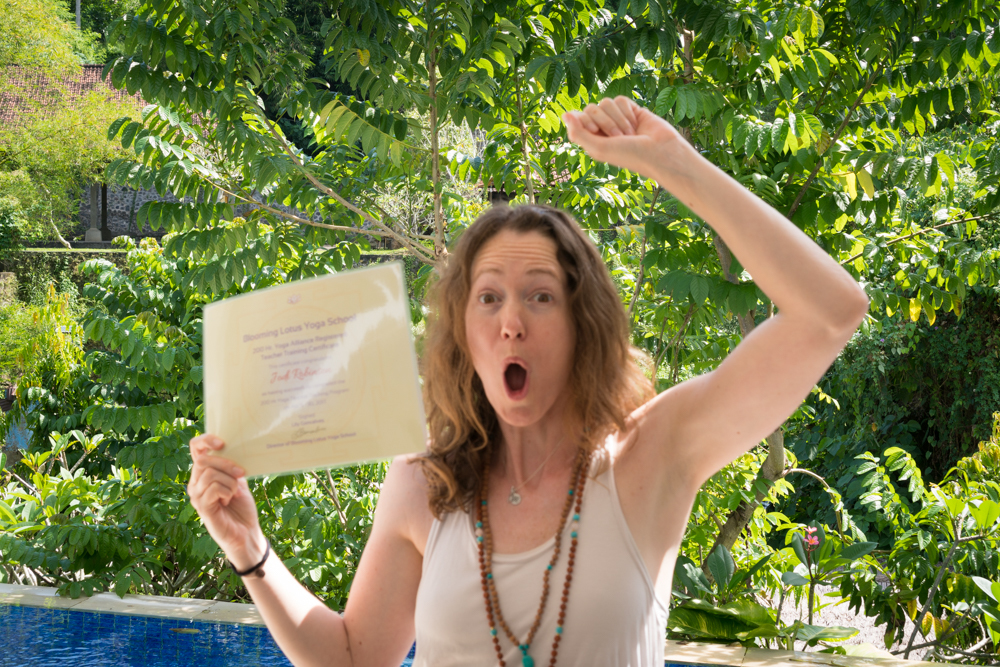
Will I take some of what I learned and apply it to my life? Absolutely. After all, I already keep the bathroom door shut at all times. I have actually chosen to apply their loving kindness meditation technique instead of insight meditation’s version of loving kindness.
I will continue to learn more about the yogic lifestyle and further try to grasp this whole movement of energy through the body thing. I went to see Ida Resi Alit, the youngest High Priestess in Bali, for a water blessing the other day. Much to my dismay, she made me a believer, despite my better judgment.
I may even further my education by doing an Anusara Yoga Teacher Training. Sh*t, I might even teach (after moving to vegetarianism, no worries). The world is my oyster. I’ve said that a lot in the last few months, and it’s a nice feeling.
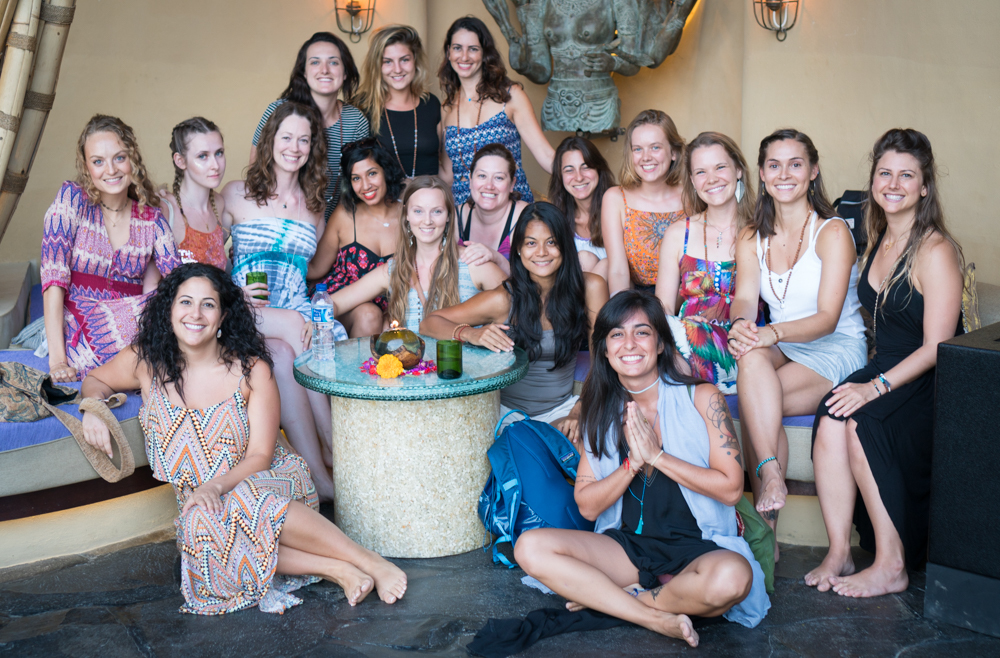
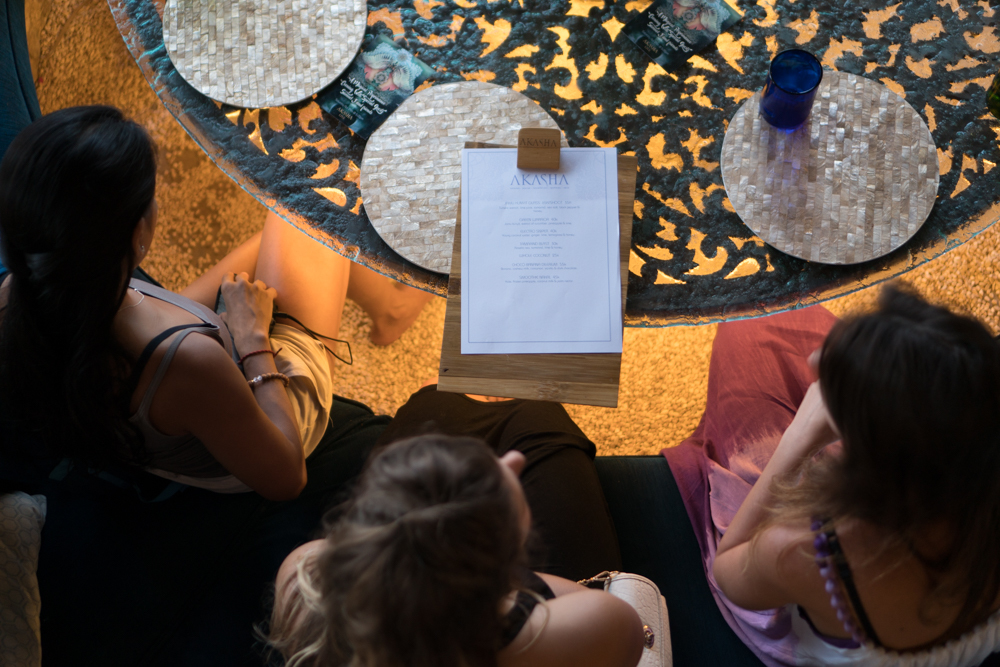
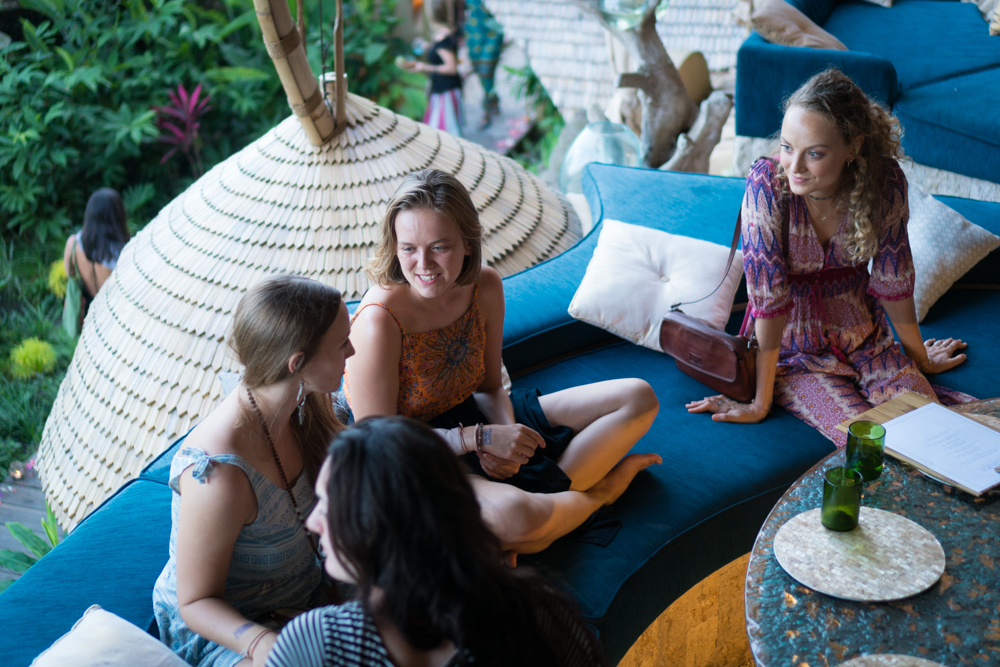


Have you completed a YTT? What was your experience and how does it differ from mine? What is your understanding of yoga?
Namaste,
Jodi
*Cover photo taken at the closing fire ceremony.